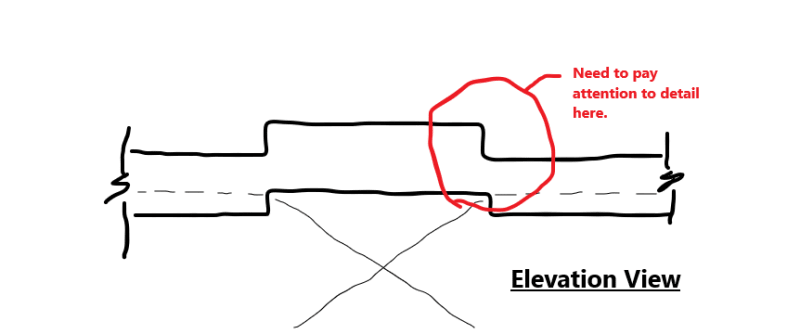Hello all,
I am currently designing a large underground cast-in-place stormwater collection structure. The roof of the structure consists of a 27" concrete slab which spans to concrete walls on two sides and to two concrete beams (which connect to the walls on each end) on the other sides. Initially, I had the concrete slab connecting to the top of the concrete beam; however, due to some constraints (the bottom of the beam interfering with the swing radius of some flap gates) I was asked if I could raise the beam up, so the slab connects into the bottom of the beam. I have attached a PDF file showing the before and after of what I have just described.
After discussing with a few fellow structural engineers in my company, we did not see any issue with bringing the slab into the bottom of the beam, as we believe it would still load the beam in the same way. But I thought I would reach out to see if anyone had any comments/concerns with this proposed beam/slab connection. Any help you can provide would be greatly appreciated!
Thank you,
Grant
I am currently designing a large underground cast-in-place stormwater collection structure. The roof of the structure consists of a 27" concrete slab which spans to concrete walls on two sides and to two concrete beams (which connect to the walls on each end) on the other sides. Initially, I had the concrete slab connecting to the top of the concrete beam; however, due to some constraints (the bottom of the beam interfering with the swing radius of some flap gates) I was asked if I could raise the beam up, so the slab connects into the bottom of the beam. I have attached a PDF file showing the before and after of what I have just described.
After discussing with a few fellow structural engineers in my company, we did not see any issue with bringing the slab into the bottom of the beam, as we believe it would still load the beam in the same way. But I thought I would reach out to see if anyone had any comments/concerns with this proposed beam/slab connection. Any help you can provide would be greatly appreciated!
Thank you,
Grant

